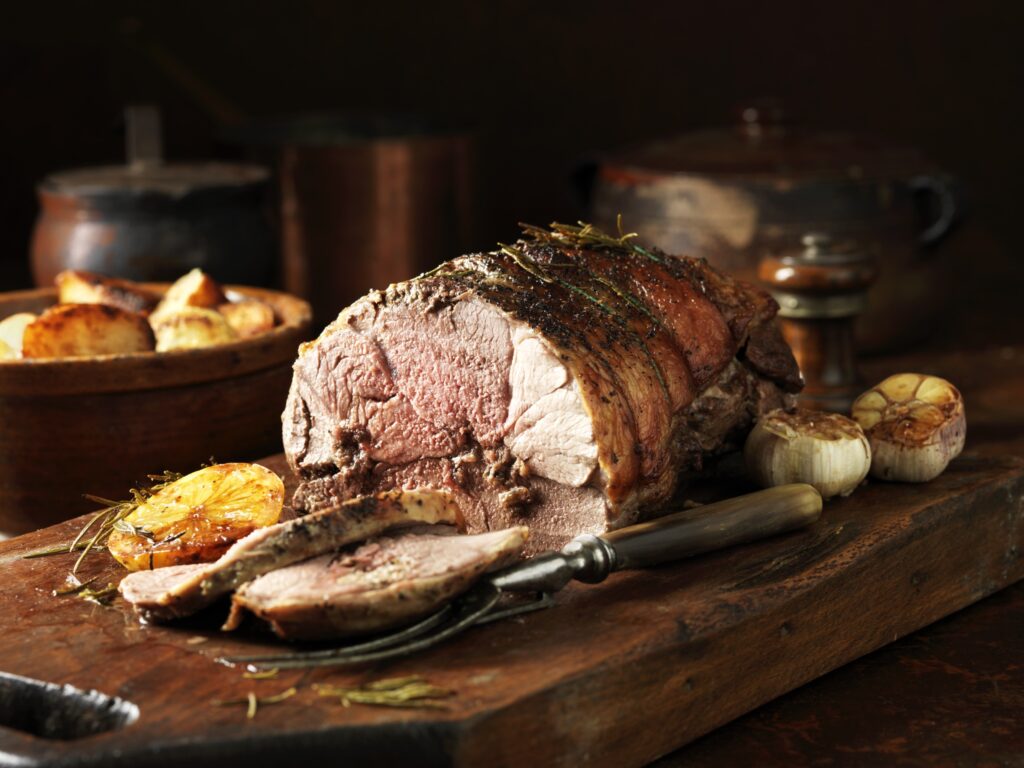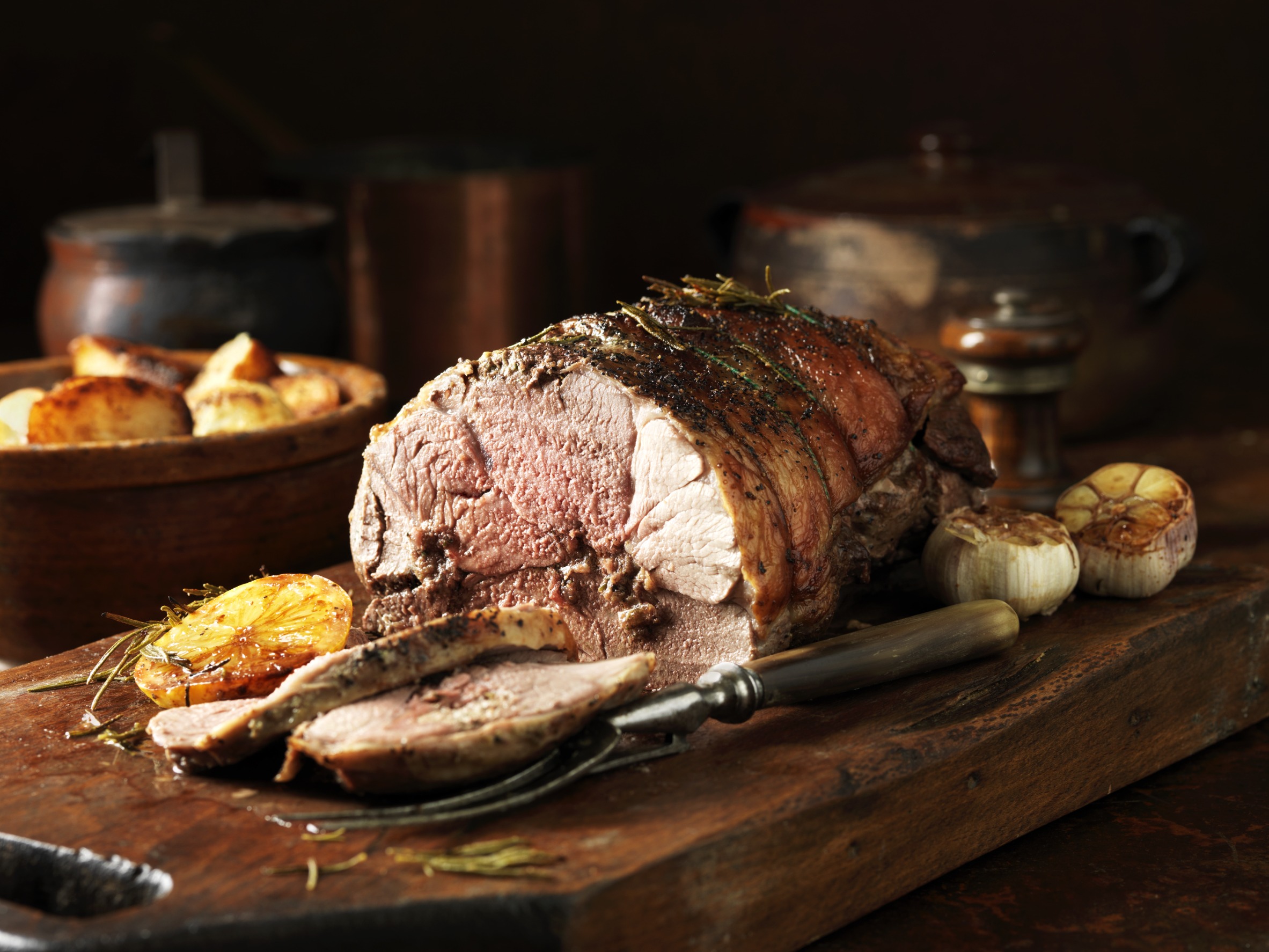Easter is a special occasion that brings families together to celebrate and enjoy a delicious meal. Here are five special Easter dinner dishes to satisfy the family, along with their history and preparation tips:
Roast Leg of Lamb
Roast leg of lamb is a traditional Easter dish with its origins in Christian symbolism. The lamb represents the sacrifice of Jesus Christ, who is referred to as the “Lamb of God” in the Bible. Additionally, lamb was a common dish in ancient times during the spring months, making it a natural choice for an Easter meal. What makes it special is its tender and flavorful meat, which is often seasoned with garlic and rosemary.
To prepare a roast leg of lamb, preheat the oven to 350°F (175°C), and season the lamb with salt, pepper, garlic, and rosemary. Roast the lamb in the oven for 1 1/2 to 2 hours, or until it reaches an internal temperature of 145°F (63°C) for medium-rare. Allow the lamb to rest for 10-15 minutes before carving.

Deviled Eggs
Deviled eggs are a popular Easter appetizer that dates back to ancient Rome. The term “deviled” refers to the spicy nature of the dish, which was believed to be the work of the devil. In modern times, deviled eggs are a staple at Easter dinners and are often decorated with paprika or other toppings to add to their presentation. What makes them special is their versatility and ease of preparation, as well as their long history as a popular Easter dish.
To make deviled eggs, hard boil eggs and cut them in half lengthwise. Remove the yolks and mix them with mayonnaise, mustard, salt, and pepper. Spoon the mixture back into the egg whites, and top with a variety of toppings, such as bacon, chives, or paprika.
Asparagus and Gruyere Tart
Asparagus has been a popular Easter vegetable for centuries due to its abundance in the spring months. Gruyere cheese, which is commonly used in French cooking, pairs well with asparagus to create a flavorful and elegant dish. What makes this dish special is its combination of fresh and seasonal ingredients, as well as its rich history in European cuisine.
To make an asparagus and gruyere tart, you will need puff pastry, asparagus, gruyere cheese, eggs, and heavy cream. Roll out the puff pastry and line a tart pan with it. Arrange the asparagus on top of the pastry.
Lemon Roasted Chicken
While lamb is a traditional Easter meat, chicken has become a popular alternative in recent years due to its lighter flavor and texture. Lemon-roasted chicken is a flavorful and juicy dish that is perfect for Easter dinner. What makes it special is its simplicity and versatility, as well as its ability to pair well with a variety of sides and sauces. Additionally, the use of lemon in the recipe adds a bright and refreshing flavor that is perfect for spring. The addition of lemon to roasted chicken is said to have originated in the Mediterranean region, where lemons were abundant and commonly used in cooking. The tangy citrus flavor of the lemon pairs perfectly with the rich, savory taste of roasted chicken, making it a delicious and refreshing dish that is perfect for celebrating Easter.
In addition to its flavor, lemon-roasted chicken also has symbolic significance during Easter. The dish represents rebirth and new beginnings, which are central themes of the Easter holiday. The lemon, with its bright and vibrant color, represents the freshness and renewal of spring, while the chicken represents the resurrection of Christ.
To make lemon-roasted chicken, you will need a whole chicken, lemon, garlic, olive oil, salt, and pepper. Preheat the oven to 375°F (190°C). Cut a lemon into quarters, and stuff it into the cavity of the chicken, along with a few garlic cloves. Rub the chicken with olive oil, and season with salt and pepper. Roast the chicken in the oven for 1 to 1 1/2 hours, or until the internal temperature reaches 165°F (74°C). Allow the chicken to rest for 10-15 minutes before carving.
Last… but not least… Hot Cross Buns
Spiced breads with a cross: For ages, spiced buns with a cross on top have been an intrinsic part of the Easter tradition. The cross etched on the bun is believed to symbolize the crucifixion of Jesus Christ. The buns’ spices, like cinnamon and nutmeg, are reminiscent of the embalming spices used after Christ’s passing. The distinct flavors of sweetness and spice, along with the rich history, make these hot cross buns an irresistible Easter delicacy.
To create these delightful treats, you’ll require an assortment of ingredients, including yeast, flour, sugar, butter, cinnamon, nutmeg, raisins, or currants, and a flour and water-based cross. Begin by blending the yeast with warm water and sugar, then add in flour, spices, and raisins or currants. Knead the dough, and let it rest for an hour. Next, mold the dough into buns and place them on a baking tray. To make the cross, mix flour and water to form a paste and pipe it onto the buns. Finally, bake the buns in an oven set at 375°F (190°C) for 15-20 minutes.
These spiced buns with a cross on top have been named in various ways over time. They are sometimes known as Good Friday buns, Easter buns, or Lenten buns. The term “hot cross buns” was derived from a 1733 nursery rhyme that goes like this:
“Hot cross buns, hot cross buns, One a penny, two a penny, Hot cross buns.”
The rhyme suggests that these buns were frequently sold on the streets and were easily affordable. Their popularity grew in the 19th century, and they were even mentioned in Charles Dickens’ novel, “The Pickwick Papers.” Today, hot cross buns are relished all around the world as a symbol of the Easter season.
Whatever you decide to make this Easter, if it is created in love your family will surely love it!

